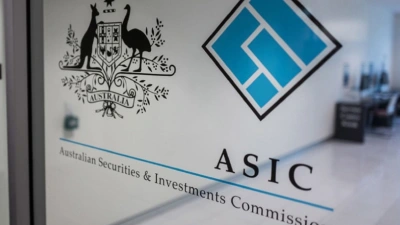Glenhurst grows up
Businesses evolve and sometimes that means changing the structure of the operation to survive.
Not every business spots the signs to undertake restructuring and subsequently fails.
In the three years sinceMoneyManagementlast investigated Melbourne-based planner groupGlenhurst Corporation, the operating structure has changed completely to create a new, more profitable business.
The dealership had grown in a traditional way familiar within the financial planning industry. It started as a single-agent business for National Mutual, it grew into a multi-agency practice and evolved into a financial planning practice.
In 2000, the plan was to grow the company to 100 advisers and sell 25 per cent of the equity to advisers to encourage commitment to growing the dealership. There was a core of in-house planners, with others working in a franchised-style of operation.
Glenhurst chief executive officer Anthony Kofkin says the first hint of problems with the old structure was the quality of advice.
“I realised that the advisers we were attracting were not of the highest calibre,” he says.
“They were advisers who move from group to group looking to earn an extra dollar.”
The outcome of this type of operation was that Glenhurst made its first loss in 12 years of trading.
“We lost $250,000 by running the business in the traditional way,” Kofkin says.
“This was the result of the in-house business subsidising the rest of the dealership.”
Kofkin says the solution was to change the business structure of the company again.
“There was no reason for planners to join us as we had no fundamental difference from other groups,” he says.
“As we are a dealer group with no debt, we went for a fee-for-service approach and we charge our advisers a flat monthly fee.”
The new business model has three categories of adviser: the ‘Premier Adviser Groups’, which consist of external adviser groups managing their own business licensed through Glenhurst; individual external advisers; and salaried in-house advisers.
The restructure saw many existing Glenhurst advisers leave because they couldn’t afford the fee, Kofkin says.
“However, we did attract high-calibre advisers from larger dealer groups who couldn’t justify the higher fees (from their existing dealer group) with the low levels of service,” he says.
“All this has been achieved by word of mouth and we have attracted some very high-calibre groups.”
Kofkin says since the change in operating structure, Glenhurst has reported its most profitable year.
The company now has $300 million of funds under advice ($100 million in 2000) and 10,000 clients.
Glenhurst has 18 advisers who are proper authority holders. In 2000 the company had 17 proper authority holders and 17 estate planning advisers.
“We also paid a dividend to the shareholders for the first time,” Kofkin says.
“So I think we now have the structure right, including the support infrastructure.”
The company has 10 back-office staff who work solely with the client base and the adviser network.
With the current structure, a mixture of advisers with their own proper authority holders and a larger group holding their own licence, Kofkin says Glenhurst will not be seeking a dealers’ licence in its own right.
“I can go out and put in the infrastructure for a dealers’ licence, but Glenhurst is becoming a co-operative structure,” he says.
“We have been approached to provide the back-office support for a dealer group. This will enable the group to trade under their own name and it fits in our co-operative structure.”
Kofkin says this structure means a dealer group doesn’t have to obtain its own licence, it can become a proper authority holder of Glenhurst.
This year is predicted to be a tough year for adviser earnings and any cuts in back-office overheads will be keenly sought.
Kofkin says refunding 100 per cent of earnings make the Glenhurst model attractive to smaller dealer groups.
The monthly fee payable to Glenhurst is $2,000 a month, with the adviser deciding the split on earnings.
“We are attracting advisers with earnings between $200,000 and $400,000,” he says.
“We provide the back-office service and we will help them implement new systems and efficiencies to boost their business.”
Kofkin says the fee structure also allows the adviser to work at their own level and use most products. Glenhurst is 100 per cent independently owned.
The company has no affiliation with any platform provider and the advisers can use a platform of their choice subject to it meeting certain requirements laid down by Glenhurst, mainly concerning liquidity.
“Being independently owned allows us and the adviser to be objective when selecting products and platforms,” Kofkin says.
However, the AustChoice platform is a popular choice with a number of Glenhurst advisers.
“We have a good working relationship with AustChoice and we have found its approach innovative and forward-looking. It creates opportunities to help advisers,” he says.
Apart from AustChoice, the company also uses the Macquarie platform, but advisers can approach Glenhurst to add others to the list, Kofkin says. In all, advisers are using about eight different platforms.
There is a similar approach to the approved product list. The list covers all areas of investment, including alternative investments such as agribusiness schemes and hedge funds.
“We do look for opportunities that will allow the planner to give clients varied allocations,” he says.
Compliance is provided by Glenhurst and Kofkin says particular emphasis has been placed on getting good staff with the technical knowledge to work in this area.
“Anybody with a proper authority has to use our compliance system, but some dealer groups with us have their own,” he says.
“If an external adviser is using Glenhurst for the back office, then they have to use our compliance system because we don’t want to tarnish our name.”
The back office can handle an expansion in dealer groups and advisers joining Glenhurst, Kofkin says.
“We are looking to grow to a maximum of 25 advisers with the current back-office,” he says.
Future plans will also mean offering some equity to advisers, but Kofkin says they will have to be with the group for at least five years before qualifying.
“We want people who will add some benefit to Glenhurst,” he says.
Recommended for you
The Financial Services and Credit Panel has made a written direction after advice regarding non-concessional contributions meant an individual was forced to withdraw over $330,000 from their super.
Merchant Wealth’s David Haintz has described how the firm differs from the traditional private equity ventures jumping into Australia, and why M&A isn’t like Married at First Sight.
ASIC has been granted permission to shut down almost 100 websites running investment scams, with the Federal Court describing how its victims were “fattened like pigs to slaughter”.
An Adelaide-based financial planning and accounting firm is set to merge into Count Adelaide, aligning with Count’s ambitions to form a national footprint of scaled equity partnerships.














